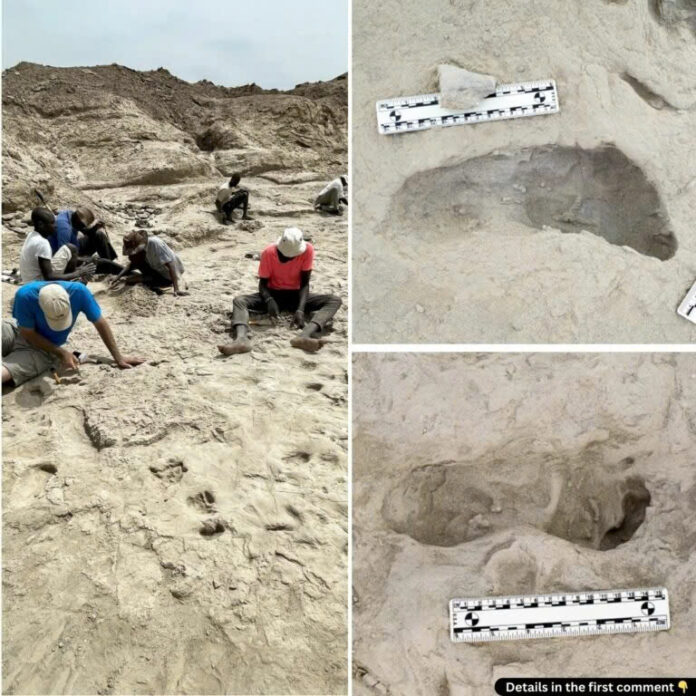In a remarkable discovery at Koobi Fora near Kenya’s Lake Turkana, scientists have uncovered fossilized footprints that tell an extraordinary story of coexistence between two early human species: Paranthropus boisei and Homo erectus. These ancient tracks, preserved in mud for over 1.5 million years, offer us a unique window into a time when our distant ancestors shared the same landscape.
The Discovery: A Perfect Preservation

On the eastern shore of Lake Turkana, what began as a single footprint discovery in 2021 soon expanded into something far more significant. By 2022, researchers had unearthed a 23-square-meter area containing 12 footprints arranged in a straight line, alongside three additional prints moving in a different direction. The conditions were perfect – not too wet, not too dry – creating ideal circumstances for preservation that would last millions of years.
Two Species, One Ancient Shore
The Trackmakers

The longer trackway of 12 prints has been attributed to Paranthropus boisei, a species known for its robust jaw and plant-based diet. The three scattered prints likely belonged to Homo erectus, a direct ancestor of modern humans. Through detailed 3D imaging and comparison with modern barefoot walkers, researchers identified distinct differences in foot anatomy and walking patterns between the two species.
A Shared Environment

The ancient Lake Turkana shore was a bustling ecosystem, home to giant birds, cow-like mammals, and dangerous predators such as crocodiles and hippos. Despite the risks, both hominin species found ways to thrive in this environment, suggesting they had developed strategies to share resources without direct competition.
Video
Implications and Future Research
Lead researcher Kevin Hatala’s team discovered evidence that these two species coexisted in the same area for up to 100,000 years. This lengthy period of cohabitation raises fascinating questions about possible interactions, cooperation, or even interbreeding between the species, similar to what we know occurred later between Homo sapiens and Neanderthals.

The discovery has been described as “mind-blowing” by Smithsonian researcher Briana Pobiner, who suggests these footprints are the closest we can get to traveling back in time to observe these ancient human species. As research continues, scientists hope to uncover more tracks and use advanced genetic and isotopic analyses to better understand the lives, diets, and behaviors of these early humans.
A Window to Our Past

These fossilized footprints represent more than just ancient tracks in mud – they’re a tangible connection to our shared evolutionary history. They remind us that human evolution wasn’t a simple, linear path but rather a complex journey where different species of early humans lived, adapted, and potentially interacted with one another.
As researchers continue their work at Koobi Fora, these remarkable footprints stand as silent witnesses to a time when two different human species walked the same earth, leaving their mark for future generations to discover and understand.

